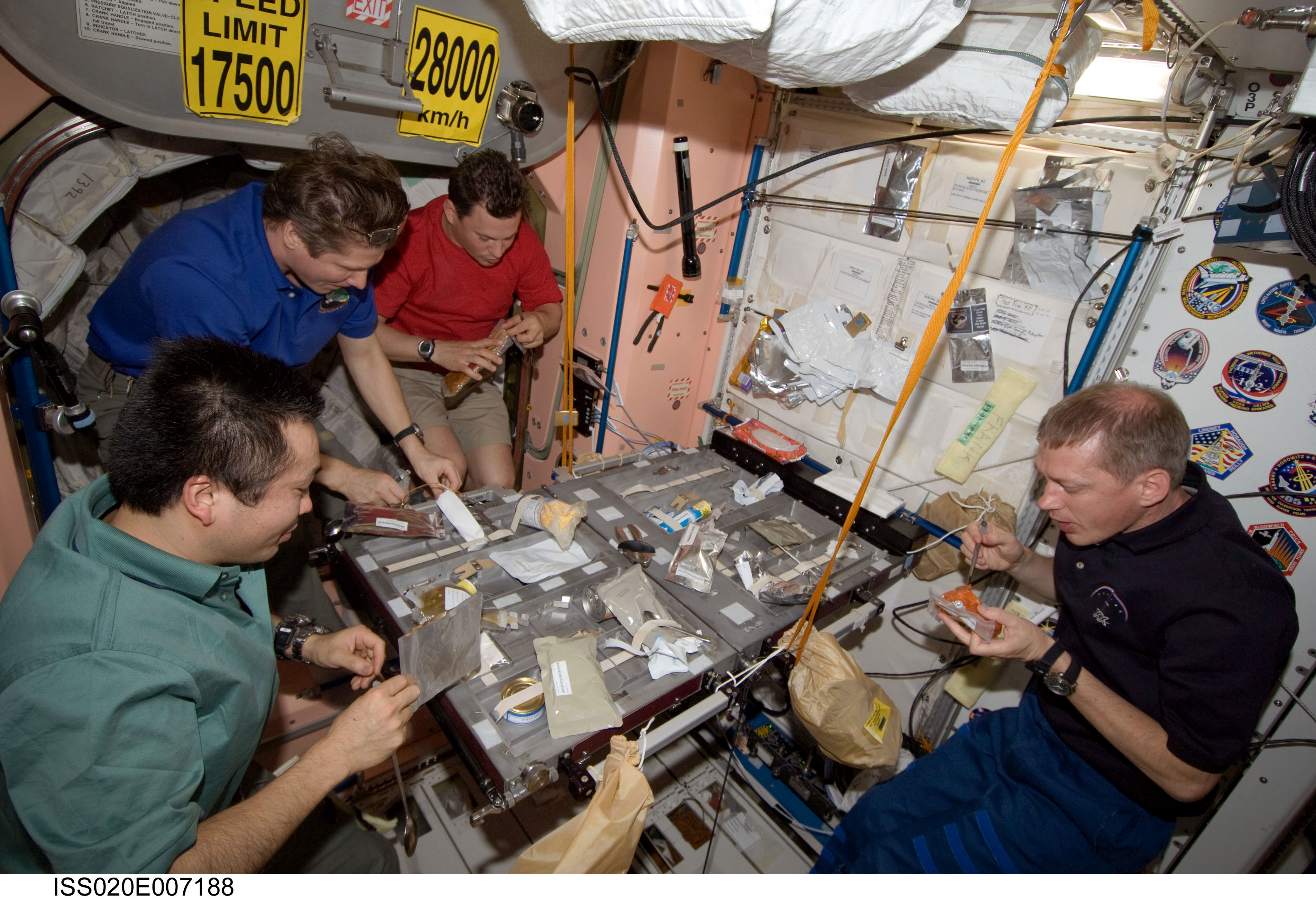Eating in space
Astronauts are far from the shops, so they have to rely on regular deliveries of food. Every few months an automated spacecraft, such as ESA’s Automated Transfer Vehicle or the Russian Progress, arrives loaded with fresh fruit, water and pre-packed meals.
Eating in space has improved a lot since the days of cold paste in aluminium tubes and cube-shaped bites. Today, space foods are similar to those eaten every day on Earth. They include frozen vegetables and desserts, refrigerated food, fruit and dairy products. Today, the menu on the International Space Station includes more than 100 items. Astronauts choose their daily menus long before they fly into space. There are three meals per day, plus snacks that can be eaten at any time. Condiments such as ketchup, mustard and mayonnaise are also provided. Salt and pepper are available too, but only in a liquid form.
Space food may be canned or wrapped in aluminium foil. It may be freeze-dried, low moisture, pre-cooked or dehydrated (with its water removed). If food is dehydrated, it cannot be eaten until the astronauts add hot water to it. Ovens are provided to warm foods to the proper temperature. Many drinks are also in a dehydrated form. Some recycled water is produced on the Station, but extra supplies have to be sent up on resupply missions. Drinks range from coffee, tea and orange juice to fruit punches and lemonade.
Getting enough calories, vitamins and minerals is as important for astronauts as it is for people living on Earth. They have to eat at least 2000 calories per day. During the mission, crew members fill out a computer questionnaire to report what foods they have eaten. Experts on the ground give them advice if they need to improve their diet.
Last modified 05 July 2011





